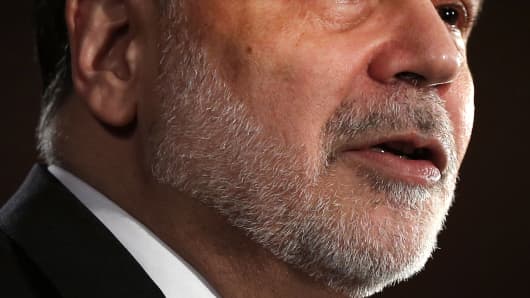"At the conclusion of the discussion, most participants thought that the Chairman, during his postmeeting press conference, should describe a likely path for asset purchases in coming quarters that was conditional on economic outcomes broadly in line with the Committee's expectations," the minutes said.
"In addition, he would make clear that decisions about asset purchases and other policy tools would continue to be dependent on the Committee's ongoing assessment of the economic outlook."
Financial markets reacted strongly to Bernanke's remarks, triggering the worst performance for stocks all year.
The minutes indicated an in-depth discussion about how financial markets were reacting to the quantitative easing measures, which entail $85 billion a month in purchases of Treasurys and mortgage-backed securities.
(Read More: Tepper Likes the Taper, Says Stocks Are Still Strong)
"A few stated their view that a prolonged period of low interest rates would encourage investors to take on excessive credit or interest rate risk and would distort some asset prices," the minutes said. "However, others suggested that the recent rise in rates might have reduced such incentives."
FOMC members showed a strong inclination to orchestrate Bernanke's comments to the media. The news conferences are a relatively new wrinkle in Fed policy during which the chairman addresses reporters at every other meeting.
Members directed Bernanke to detail "a likely path" for a pullback in the asset purchases that would be dependent on economic data continuing to improve.
(Read More: Here's Who Wins and Who Loses From Fed Taper Talk)
In its economic review, the committee said growth is increasing at "a moderate pace," language consistent with previous statements. There was some concern that higher mortgage rates would derail the housing recovery, but most agreed that things were continuing apace.
Some members suggested the Fed should establish benchmarks for QE reductions along the lines of what it has outlined for interest rate increases. The Fed set a 6.5 percent unemployment rate and 2.5 percent inflation as conditions for an increase in the target funds rate.
However, other members worried that doing so might constrain policy.
Stocks drifted higher after the release of the minutes, while the benchmark 10-year Treasury note actually saw a brief decline in yield that quickly reversed.
_ By CNBC's Jeff Cox. Follow him @JeffCoxCNBCcom on Twitter.





